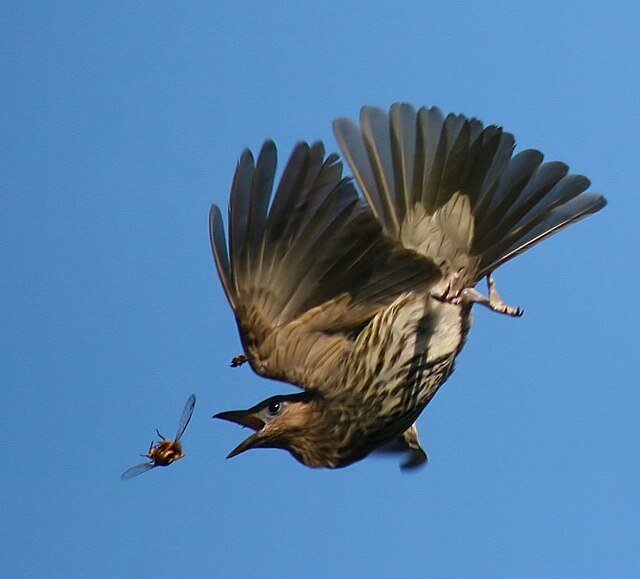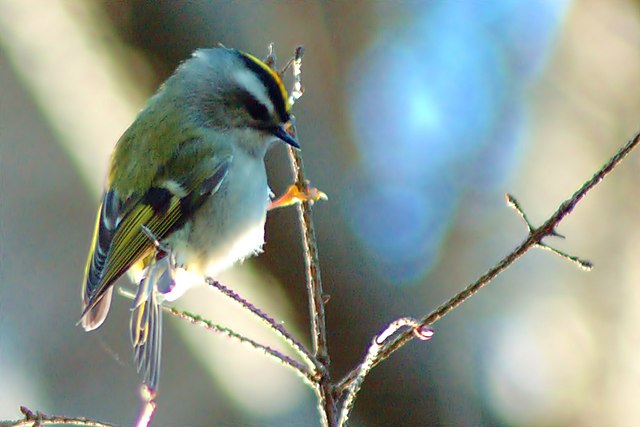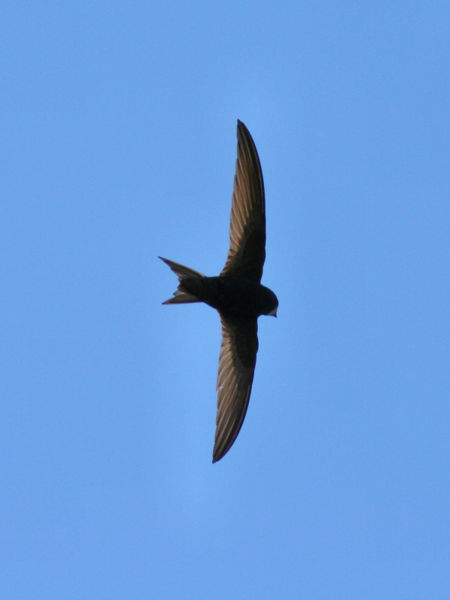Gleaning is a feeding strategy by birds in which they catch invertebrate prey, mainly arthropods, by plucking them from foliage or the ground, from crevices such as rock faces and under the eaves of houses, or even, as in the case of ticks and lice, from living animals. This behavior is contrasted with hawking insects from the air or chasing after moving insects such as ants. Gleaning, in birds, does not refer to foraging for seeds or fruit.
African penduline-tit (Anthoscopus caroli) hanging from the end of a branch and gleaning.
Common tailorbird (Orthotomus sutorius) gleaning among flower buds.
Golden-crowned kinglet (Regulus satrapa) gleaning from twigs.
Cinereous tit (Parus cinereus) hanging from a leaf and gleaning.
Hawking is a feeding strategy in birds involving catching flying insects in the air. The term usually refers to a technique of sallying out from a perch to snatch an insect and then returning to the same or a different perch, though it also applies to birds that spend almost their entire lives on the wing. This technique is called "flycatching" and some birds known for it are several families of "flycatchers": Old World flycatchers, monarch flycatchers, and tyrant flycatchers; however, some species known as "flycatchers" use other foraging methods, such as the grey tit-flycatcher. Other birds, such as swifts, swallows, and nightjars, also take insects on the wing in continuous aerial feeding. The term "hawking" comes from the similarity of this behavior to the way hawks take prey in flight, although, whereas raptors may catch prey with their feet, hawking is the behavior of catching insects in the bill. Many birds have a combined strategy of both hawking insects and gleaning them from foliage.

Australasian figbird, catching a beetle on the wing
Brown honeyeater, one of a group hawking from a Casuarina
White-fronted chat, returning to a perch with insects caught in flight
Common swift in flight








